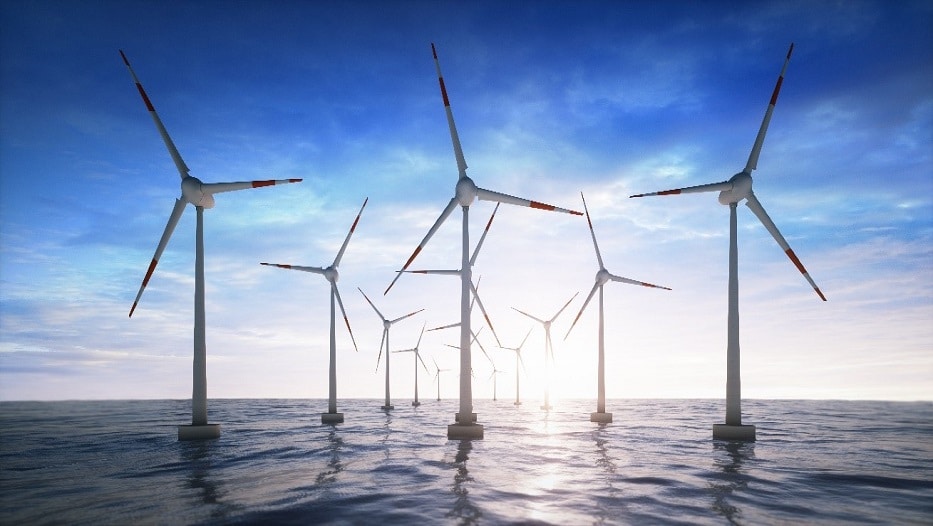Adán Cubillo Hurtado | 03/05/2022
Wind power is a great opportunity for economic and industrial development for Spain, both in its application, with the potential of its extensive coastal areas, and in R&D, where it has a network of research centers, universities and testing platforms that have been deploying studies and technologies already applied to international projects for more than 15 years. Tomás Romagosa Cabezudo, technical director of the Spanish Wind Energy Association, talks to us about the challenges in the sector and its impact in the strategic areas with which it interacts and coordinates, such as shipbuilding, civil engineering and the metal industry.
Offshore wind is an unlimited, clean and renewable energy source that presents itself as a significant alternative in order to reach decarbonization targets. What will be its contribution to promoting a climate neutral European economy by 2050? Could you please describe its greatest strengths?
In 2021, there was 25 GW of installed power in Europe, with 2.9 GW installed in 2020 despite the pandemic. The countries with the greatest capacity include the United Kingdom, France, Denmark, the Netherlands, Germany and Belgium.
The European Union has made an ambitious commitment to incorporate offshore wind into its decarbonization strategy by 2050. The European Strategic Energy Technology Plan (SETPlan) adopted the strategic objective of consolidating the EU’s global leadership in offshore wind power, and at the end of 2020, the European Commission approved the European Offshore Renewable Energy Strategy, setting targets of more than 60 GW by 2030 and 300 GW by 2050.
Offshore wind is a great opportunity for industrial and economic development for Spain. Our country has the full value chain of the offshore wind sector and has the opportunity to become an industrial and technological development hub in this area, especially for floating technology. This will help to achieve the energy and climate goals established by Spain, having a positive macroeconomic impact at the national level, but also at the local and regional level, thanks to the creation of skilled employment, increased exports and the growth of national GDP.
According to data from the Ministry for Ecological Transition, by 2030 annual offshore wind installation capacity could outweigh onshore wind, and it is estimated that it will supply 14% of the EU electricity demand. What stage is development at? How will growth be driven?
In our country, the recently approved Roadmap for the Development of Offshore Wind and Hydroelectric Energy in Spain has established the target of installing 3 GW nationwide. At this time, the Ministry for Ecological Transition and Demographic Challenge is working on the Planning of Maritime Space, to identify the most sustainable and efficient areas to install offshore wind farms, as well as developing regulations for the processing and allocation of projects. This entire regulatory framework is expected to be finalized by the end of the year, so that the first invitation to tender can then be put out in Spain.
What are the advantages of offshore wind farms over onshore wind farms?
Offshore wind is a renewable energy source that uses the force of the wind out at sea to generate electricity. Offshore wind turbines operate similarly to their onshore counterparts, with the most notable differences between both technologies being the adaptation of offshore designs to the marine environment and the nature of the support structure that elevates the machines above sea level. Some of the advantages of offshore wind are:
- Turbines in the open sea are superior to those onshore, in terms of average speed and regularity, enabling wind turbines to generate energy for more hours per year.
- There are fewer logistical limitations for transportation, especially in offshore wind, allowing taller and higher power wind turbines to be installed.
- All of this enables offshore wind to obtain much higher capacity factors than other renewable technologies, being able to exceed 50% in many sites.
- Floating wind power allows wind turbines to be installed farther from the coast, which in turn minimizes the visual impact on the landscape and increases the possibilities of coexistence with other activities.
Not all offshore wind techniques are the same. What differences can we see between fixed foundation offshore wind turbines and those with a floating platform? Does the future of this energy lie in the second type?
Currently, most commercial offshore wind farms in service are based on fixed foundation types. With this technology, wind turbine foundations are piled or installed in the seabed, which means it needs to be a suitable technology for depths up to 50–60 meters. At greater depths they become unviable due to the high economic costs and the technical difficulties entailed in installation and maintenance.
However, the commitment to offshore wind in Spain is with floating technology, given the characteristics of our coastline, where extreme depths are reached quickly due to the scarce continental shelf. The floating platforms on which wind turbines are installed are structures that remain floating at sea, but are attached to the seabed by chains and anchoring systems. This opens up the possibility of sites at greater depths, inaccessible to fixed foundation technology, which is a significant advantage given that 80% of the offshore resource in Europe is located in waters more than 60 meters deep. Furthermore, the development of floating offshore technology reduces the costs and risks associated with the construction, installation, operation and dismantling of fixed foundation turbines. The first floating wind turbine projects are becoming a reality, and they are expected to expand greatly in the coming years.
And if we focus on Spain, what situation and potential does it have when it comes to offshore wind power generation?
In Spain, we have more than 6,000 km of coastline, along which there are areas with a high potential for the installation of offshore wind farms. Regions such as Galicia, Asturias, Girona, the Canary Islands and the Straits of Gibraltar area have very favorable wind resource conditions, with very high average wind speeds.
The target of the Roadmap is to have 3 GW of offshore wind by 2030. This figure is attainable as long as the relevant regulations are expedited and it is put out to tender. Estimates for 2050 range from 13 to 17 GW, depending on the development scenarios being considered.
To reach these goals, it is key to work with precision and dialogue, seeking consensus and coexistence with all sectors and activities involved in the offshore environment.
But this is not our only strength. How is the country evolving in terms of the development and manufacturing of equipment? How would you rate the country’s engineering and technological capabilities?
Spain is a leader in R&D&i and in the technological development of offshore wind power. It currently holds more patents for floating solutions than any other country. Spain has a network of research centers, universities and test platforms that, for more than 15 years, have been developing studies and technologies already applied to international projects and that, with the development of offshore wind in Spain, will provide an even greater boost to the national industrial and research sector.
The ICTS-MARHIS group for Unique Scientific and Technological Infrastructure is the only network of offshore technology research centers of its kind in the world. For example, Test Platforms such as BIMEP (Basque Country) and PLOCAN (Canary Islands) stand out, designed to demonstrate new offshore technologies.
How are the naval industry and the maritime-port sector involved in Spain’s place as an international benchmark in the value chain of offshore wind farms?
The development of offshore wind is a boost to the strategic sectors with which it interacts and collaborates, such as shipbuilding and shipyards, the auxiliary maritime and port management industry, civil engineering and consulting, the construction industry, and the metal industry, etc. For these sectors, offshore wind has become an important market in their business diversification strategies. Our country ranks second in Europe and tenth in the world in the shipbuilding sector. It also ranks third among countries in the European Union in terms of the number of shipyards in operation. The majority of its activity is concentrated in Galicia, the Canary Islands, Asturias and the Basque Country.
Furthermore, our country also has a strong network of ports that can act as links with industrial activity associated with offshore wind farms, improving their capacities and generating greater economic activity.
That is to say, Spain already has a very significant industrial capacity, with an entire value chain that successfully competes in the exportation of components and services for offshore wind farms in northern Europe. In fact, of the 13 floating foundation solutions currently installed across the world, 11 were manufactured by Spanish companies.
What can this potential represent for Spain? What challenges do we face to make the most out of this opportunity?
In order to be able to take advantage of Spain’s leadership situation in offshore wind and ensure that targets are met, as well as to maintain the competitiveness of Spanish companies, it is essential that a local market in floating offshore wind be developed in the short term, with a reasonable size to generate a positive knock-on effect on the economy and industry of coastal regions.
In this sense, two scenarios of the impact of floating offshore wind nationally have been studied for Spain. These are scenarios that Spain may face in the future based on the commitment being made to this technology in the coming years. In the first low-impact scenario, where only 11 GW would be installed, the contribution of floating offshore wind to GDP would reach €4.681 billion by 2050, entailing 24,688 direct jobs and 18,981 indirect jobs. Meanwhile, in the second scenario, in which offshore wind has a high impact and 22 GW is installed (coinciding with the estimates for Spain from the WindEurope association), the annual contribution to GDP would reach €7.752 billion by 2050, entailing 43,998 direct jobs and 33,828 indirect jobs.
What should the roadmap be like to consolidate the position of global leader and being a European benchmark in technological development and R&D?
The Roadmap to be followed in the development of offshore wind already considers this technology to be a sector with great potential to contribute to the Just Transition Strategy. Spain has an optimal base to lead the development of floating offshore wind given its current industrial wind power capacity, its strategic geographic position, its competitiveness, and its research centers.
How will the competitiveness of this energy be increased? How do you expect the future to look?
Offshore wind technology is undergoing considerable development, progressing to its full technological maturity, thus presenting a great potential to help achieve European and national energy transition goals.
From the Spanish wind sector we have carried out the initiative of the Foro Eólico Marino [Offshore Wind Forum] with the launch of a manifesto. This manifesto aims to raise awareness, among civil society and representatives of economic and industrial activities, of the need for offshore wind farms in Spain as a strategic industrial sector and a driver of economic recovery in our country. It will promote dialogue with sectors opposing the development of offshore wind farms, so that institutions, experts, associations, companies from different sectors and society come together to advance the floating offshore wind strategy in Spain. The manifesto can be found on the Foro Eólico Marino website. On this website, all interested companies, institutions or individuals can join this campaign by signing the Manifesto.
 Tomás Romagosa Cabezudo, Technical Director of the Spanish Wind Energy Association (AEE). Industrial Engineer and Organization Engineer at the Universidad Pontificia de Comillas [Comillas Pontifical University], he has been Technical Director of the Spanish Wind Energy Association since 2017 and is responsible, among other things, for the activities of Offshore Wind, Integration of Wind into the Grid, Monitoring of the Electricity Market, Industrial Agenda, Operation and Maintenance, Extending the Life of Wind Farms, Cybersecurity and Preventing Occupational Risks.
Tomás Romagosa Cabezudo, Technical Director of the Spanish Wind Energy Association (AEE). Industrial Engineer and Organization Engineer at the Universidad Pontificia de Comillas [Comillas Pontifical University], he has been Technical Director of the Spanish Wind Energy Association since 2017 and is responsible, among other things, for the activities of Offshore Wind, Integration of Wind into the Grid, Monitoring of the Electricity Market, Industrial Agenda, Operation and Maintenance, Extending the Life of Wind Farms, Cybersecurity and Preventing Occupational Risks.
He is also the secretary of the UNE CTN221 Technical Committee on Standardization of “Wind Power Generation Systems” and is a coordinator of the Wind Sector technology platform (REOLTEC), responsible for managing all issues related to innovation and R&D with the Administration. He has previously been a group coordinator within the Energy and Infrastructure Management of the public company ISDEFE.





